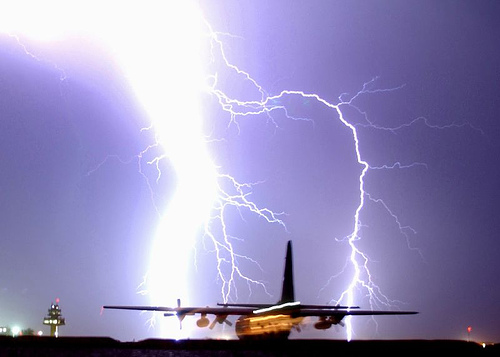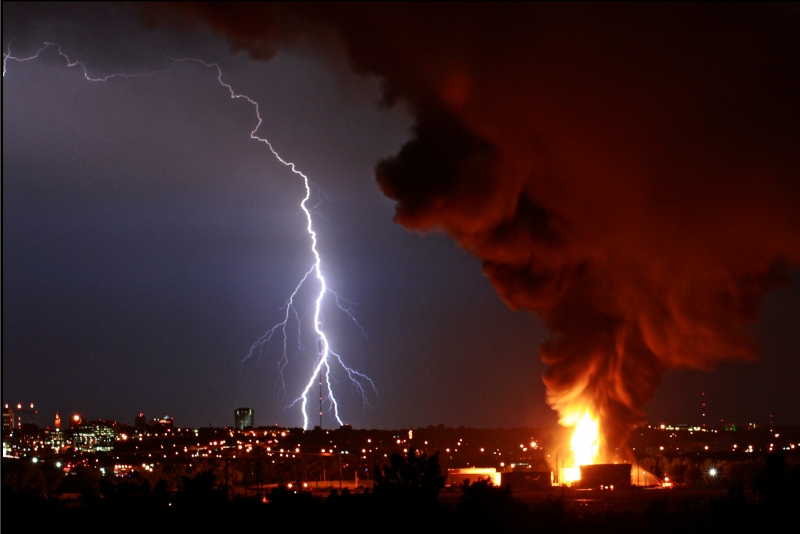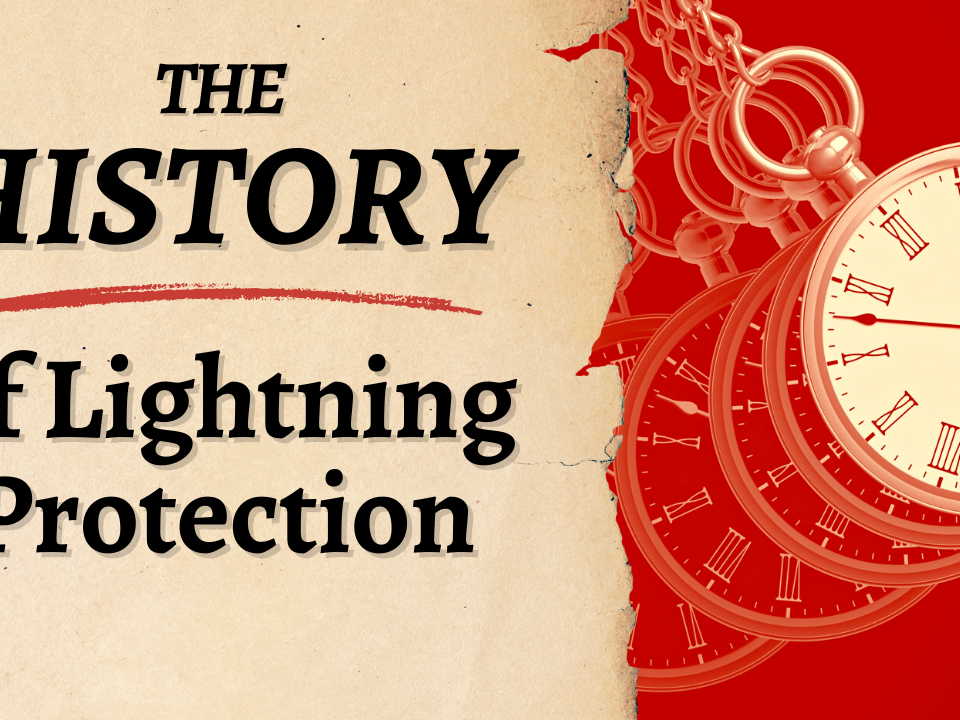
Non-Metallic Chemical Storage Tanks and Lightning Impact Mitigation: Problem Solved!
November 15, 2013
Lightning Protection: Misspelled, Misunderstood and Manhandled- Part One
January 23, 2014The Billion Dollar Question | Lightning Protection…can you afford not to?
- acr discharge
- charge transfer
- DAS
- electronics
- facilities
- franklin rod
- lightning
- lightning prevention
- lightning protection
- Lightning Protection Systems
- Lightning rod
- Lightning Rods
- lightning strikes
- Manufacturing.net
- Map Ta Phut Industrial Park
- Map Ta Phut lightning strike
- non-metal storage tanks
- Non-metallic Storage Tanks
- risk mitigation
- safety

Lightning Protection Blog by the LightningDiva@Large | Week 73
This month Pete Carpenter was featured in Manufacturing.Net. I thought I would highlight this article in the blog this week because it is applicable to all industries, including those that Lightning Eliminators protects, across the board. In addition, relevant to every country in which Lightning Eliminators has installed Lightning Protection Systems (LPS).
Lightning Eliminators works with more than 35 different industries in over 80 countries. All of them have a common thread; the safety of their employees, community and facility, as well as, protecting their assets, revenue and operations. It does not matter in what industry the damages are incurred, a lightning strike can cost a company billions (yes I said billions,) as we saw with a recent lightning strike in Thailand last year at the Map Ta Phut Industrial Park, Bangkok Synthetics Co (BSC) facility. During that same storm which eventually closed this company down completely, Lightning Eliminators’ customers, in the same industrial park, located a distance away, across the park, were safe and secure suffering no outages or losses. Unfortunately this was not the case for BSC. The strike killed 12, injured 129 and at last count cost them over $1 Billion, ultimately closing the factory down.
Maximizing Operational Reliability through Lightning Protection
By Peter Carpenter, Lightning Eliminators and Consultants, Inc. | featured in Manufacturing.net
An important part of managing any major facility or operation is risk mitigation, which includes both understanding what potential risks might be and incorporating proven safety measures to deal with the challenges that could arise. Particularly for companies that are in the business of providing products or services, it is critical to optimize and protect operations and assets, avoiding downtime, delays, and loss. For any business with a physical presence, from a nuclear power plant to a large manufacturing and shipping facility to an office equipped with sensitive electronics, a determination of the consequences of a lightning strike should be part of this risk analysis.
Lightning Strike Risk
Lightning strikes, one of the most common weather-related threats that businesses face today, are potentially devastating. They are more frequent than many realize – striking as often as 100 times per second worldwide, according to the National Weather Service – and are highly unpredictable. Lightning effects are also on the rise all over the world due to changes in global weather patterns, with some climate change researchers predicting as high as a six percent increase in lightning strikes for every degree of global temperature change.
As a result, we are seeing a large number of lightning strikes in places where lightning may have been historically scarce, and this means that areas and industries that have previously not seen themselves as susceptible to lightning will see a greater impact in the future. According to the National Lightning Safety Institute, losses related to lightning damage exceeded $5 billion in 2009, and have only risen since then. With lightning events on the rise, stakeholders in a number of different industries are searching for more proactive ways to mitigate the risk of lightning damage, prioritizing the protection of their facilities.
What Are The Dangers Of A Strike?
In considering the danger of lightning to a particular facility, businesses can evaluate the technical aspects of lightning in their area (the isokeraunic number and lightning flash density), the size of the facility, the height of structures, and the sensitivity of electronic and electrical systems. Another concern is the environmental impact of lightning, as well as personnel safety and the historical value of a site. Additionally, an obvious concern are those facilities that house highly flammable or explosive materials, which can result in catastrophic damage in the event of a direct strike. However, other types of operations are in danger as well, since even small sparks can ignite fires, and even in the absence of a direct strike, secondary surges can deal a great deal of damage to electrical systems.
Another serious logistical danger of a lightning event to a product and service based business is that of downtime. Minimizing mean down time (MDT), the amount of time that a system is non-operational, is an important part of optimizing reliability. By implementing proactive protection measures, an operation can also decrease mean-time-between-failure (MTBF). By including lightning protection in the initial design of a plant or factory, that MTBF could decrease drastically.
A Memphis Case Study
For one large shipping company with an air hub based in Memphis, Tennessee, their industry leadership is based on their ability to maintain continuous operations under virtually any conditions, meaning that downtime is unacceptable. The weather has always been a constant source of concern for their shipping, but after observing the increase in lightning events across their global operation, they undertook a thorough lightning strike risk assessment for their main air hub in the early 1980s.
During this assessment it was determined that the Memphis air hub faced a number of challenges, geographically and logistically, including the number of employees working outdoors at the facility. They also required a plan to protect the millions of dollars of equipment installed there: sensitive electronics that included automated packing systems, electronic command and control systems, electronic flight control and operation systems, and avionics in the aircraft. Additionally, flammable liquid stored on site to support flight operations was susceptible to ignition during direct lightning events.
With a reputation dependent upon always on-time delivery, any failure at this major sorting line at peak time would be felt throughout the company’s U.S. facilities and create strain on the intensive, 24/7 operation. After this risk evaluation, they decided to implement a lightning protection systems, and Lightning Eliminators & Consultants, Inc. (LEC) installed a Dissipation Array System (DAS), which is built around scientific and engineering principles that can prevent lightning within a zone of protection.
For almost 30 years, the shipping company has received continuous lightning protection at this air hub, the umbrella-shaped Dissipation Arrays still clearly visible on the light poles and structures around the facility. The reputation of reliability has inspired others in the industry as well, and in 1999 a second major shipping company evaluated their lightning risk at their state-of-the-art package sort facility in Louisville, KY, and put in place DAS as well to ensure site isolation from the effects of lightning at their major air hub.
Dissipation Array System
When it comes to actually choosing and implementing a lightning protection systems, technology has come a long way since Benjamin Franklin experimented with kites and keys in the 1700s. Though traditional lightning rods are still in use and are very effective in some situations, it is also true that they work by actually collecting lightning, attracting strikes and conveying that energy to the ground rather than into the protected structure. However, attracting lightning may not be ideal for some facilities, such as those that have flammables or other sensitive materials, since using an attractor could carry the risk of ignition or damage to sensitive electronics.
The Dissipation Array System implemented by the shipping companies works by preventing lightning instead – within a zone of protection, it collects the induced charge developed by storm clouds, transferring it through an ionizer into the surrounding air and thus preventing the strike from occurring at all. This is an example of charge transfer technology, an approach to lightning protection that has been effective all over the world for over forty years.
Tailoring a Lightning Protection Plan
One important thing to remember is that lightning protection solutions should be tailored to the needs of the individual facility. When analyzing lightning risk, LEC engineers start by asking the client about their goal – particularly if the answer is to avoid any lightning-related problems at all, then the engineering group does an on-site design study to analyze vulnerabilities and formulate a tailored solution.
Beyond just direct strikes, the secondary surge effects of lightning are also a consideration. Data centers, for example, have a lot of sensitive electronics, and a lightning protection solution typically includes surge protection to prevent overvoltage from coming in over a power and data lines.
Risk analysis should include grounding as well. LEC’s Smart Ground test analyzes the in-situ grounding environment and compares the actual measurements to an electro-geometric computer model of the system being tested. Tailored recommendations can help avoid the risks of inefficient grounding, including negative effects on lightning and surge protection systems.
Lightning is a risk that can affect nearly any business or facility. When operational reliability is a priority, proactive measures to mitigate this risk become critical. By analyzing vulnerabilities to lightning effects up front, a factory, plant, or other operation can strategize to avoid heavy losses in the future.
Visit Article as it appeared in Manufacturing.net
Peter Carpenter is Executive Vice President and Director of Applied Engineering for Lightning Eliminators & Consultants. He is responsible for overseeing site surveys and analysis, and assisting in numerous field evaluations to solve bonding, grounding, power conditioning and lightning-related electronic issues.


